See the original image at movieline.com — Will Ferrell's Uncredited Role in "The Goods" Will Be Huge
 It may not surprise you to know that The Goods was produced by Will Ferrell’s company Gary Sanchez, as the car salesman comedy bears all the hallmarks of the ex-SNLer’s work: a deluded egotist at its center (here played, in a stretch, by Jeremy Piven), a vaguely unflattering wardrobe that looks snatched from the disco era, and David Koechner in a supporting role. What may not be apparent, though, is that the movie boasts a secret star performance that’s glimpsed for nary a frame in the new trailer below.
It may not surprise you to know that The Goods was produced by Will Ferrell’s company Gary Sanchez, as the car salesman comedy bears all the hallmarks of the ex-SNLer’s work: a deluded egotist at its center (here played, in a stretch, by Jeremy Piven), a vaguely unflattering wardrobe that looks snatched from the disco era, and David Koechner in a supporting role. What may not be apparent, though, is that the movie boasts a secret star performance that’s glimpsed for nary a frame in the new trailer below.
That’d be from Ferrell, whose unbilled role is actually one of the largest in the movie, according to Piven himself. It’s not the first time Ferrell (who recently played a car dealer in Eastbound & Down) has gone without credit — there was also his third-act performance in Wedding Crashers, and his, uh, cameo as Artie Lange’s boyfriend in Boat Trip, according to the IMDb. There are no survivors of that movie who can confirm how that went.
So how does the Ferrell-less trailer play? Meh. Ironically, the missing Ferrell role really seems to be the one Piven’s playing; only Ferrell himself could tap into the outsized sense of the absurd it takes to truly sell Piven’s introductory monologue. Expect a second trailer with wall-to-wall Will as soon as the test scores come in.
VERDICT: Wouldn’t drive it off the lot.








 [Image: Ruined swimming pool at
[Image: Ruined swimming pool at  [Image: Saddam's heads, taken from the roof of the Republican Guard Palace, now located at Al-Salam Palace, Forward Operating Base Prosperity, Baghdad, Iraq (2009); photo by
[Image: Saddam's heads, taken from the roof of the Republican Guard Palace, now located at Al-Salam Palace, Forward Operating Base Prosperity, Baghdad, Iraq (2009); photo by 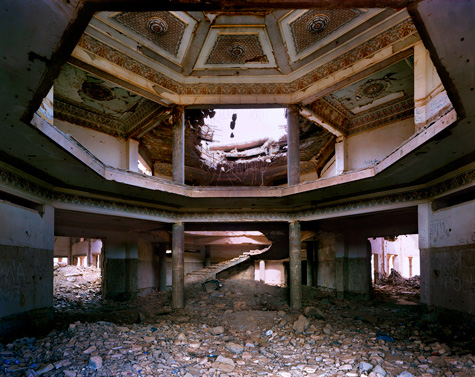 [Image: JDAM bomb damage within Saddam's Palace interior, Jebel Makhoul, Iraq (2009); photo by
[Image: JDAM bomb damage within Saddam's Palace interior, Jebel Makhoul, Iraq (2009); photo by 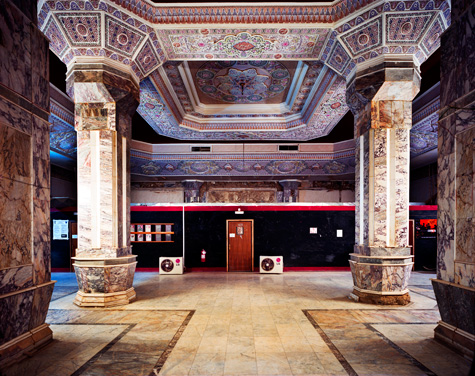 [Image: U.S.-built partition and air-conditioning units within Al-Salam Palace, Forward Operating Base Prosperity, Baghdad, Iraq (2009); photo by
[Image: U.S.-built partition and air-conditioning units within Al-Salam Palace, Forward Operating Base Prosperity, Baghdad, Iraq (2009); photo by 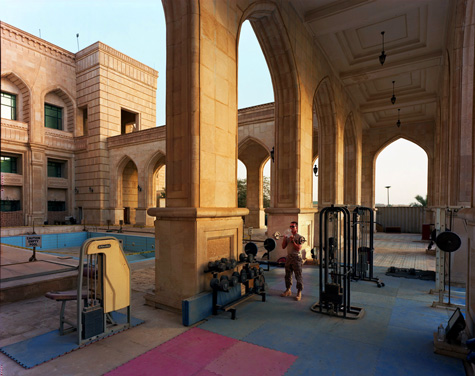 [Image: Outdoor gym, Al-Faw Palace, Camp Victory, Baghdad, Iraq (2009); photo by
[Image: Outdoor gym, Al-Faw Palace, Camp Victory, Baghdad, Iraq (2009); photo by  [Image: U.S. military telephone kiosks built within Birthday Palace interior, Tikrit, Iraq (2009); photo by
[Image: U.S. military telephone kiosks built within Birthday Palace interior, Tikrit, Iraq (2009); photo by 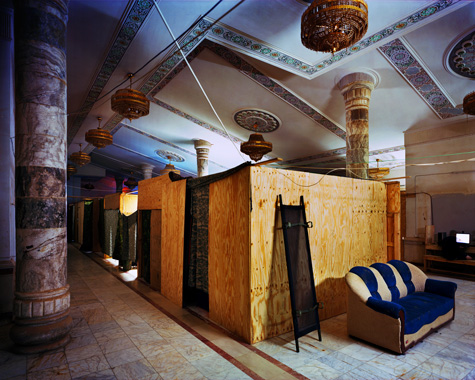
 [Images: American dormitories built within Saddam's Birthday Palace, Tikrit, Iraq (2009); photos by
[Images: American dormitories built within Saddam's Birthday Palace, Tikrit, Iraq (2009); photos by 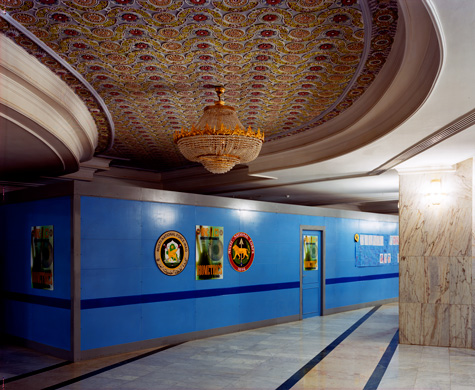 [Image: Provisional office wall partitions within Al-Faw Palace, Camp Victory, Baghdad, Iraq (2009); photo by
[Image: Provisional office wall partitions within Al-Faw Palace, Camp Victory, Baghdad, Iraq (2009); photo by  [Image: Fallen tiles and chandeliers, Al Faw Palace, Camp Victory, Baghdad, Iraq (2009); photo by
[Image: Fallen tiles and chandeliers, Al Faw Palace, Camp Victory, Baghdad, Iraq (2009); photo by  [Image: "Thank you for your service" banner, Al-Faw Palace interior, Camp Victory, Iraq (2009); photo by
[Image: "Thank you for your service" banner, Al-Faw Palace interior, Camp Victory, Iraq (2009); photo by 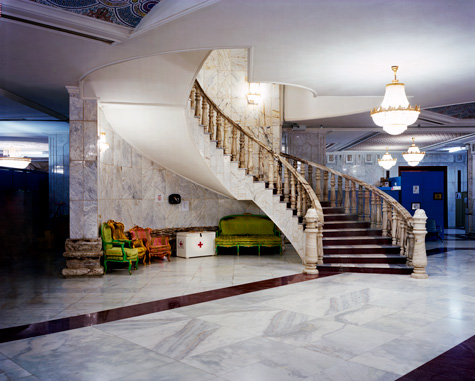 [Image: Stairway, Al-Faw Palace, Camp Victory, Baghdad, Iraq (2009); photo by
[Image: Stairway, Al-Faw Palace, Camp Victory, Baghdad, Iraq (2009); photo by  [Image: Chandelier, Al-Faw Palace, Camp Victory, Baghdad, Iraq (2009); photo by
[Image: Chandelier, Al-Faw Palace, Camp Victory, Baghdad, Iraq (2009); photo by 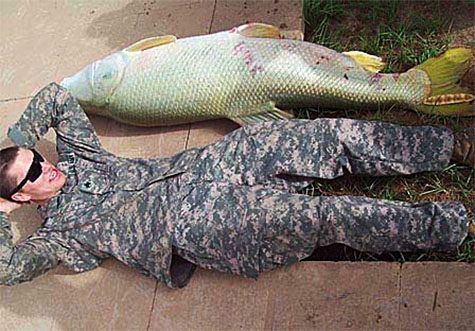 [Image: Tigris Salmon caught at Camp Victory Base, measuring 5 feet 10.5 inches and weighing 105 lbs. Image courtesy of the
[Image: Tigris Salmon caught at Camp Victory Base, measuring 5 feet 10.5 inches and weighing 105 lbs. Image courtesy of the  [Image: A game of basketball, Birthday Palace, Tikrit, Iraq (2009); photo by
[Image: A game of basketball, Birthday Palace, Tikrit, Iraq (2009); photo by  [Image: Detail of U.S. soldier's living quarters, Birthday Palace interior, Tikrit, Iraq (2009); photo by
[Image: Detail of U.S. soldier's living quarters, Birthday Palace interior, Tikrit, Iraq (2009); photo by  [Image: Birthday Palace, Tikrit, Iraq (2009); photo by
[Image: Birthday Palace, Tikrit, Iraq (2009); photo by 



















